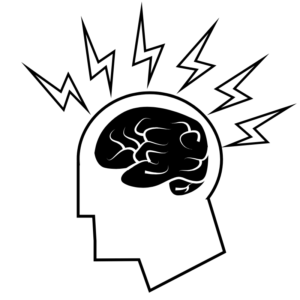If you’ve ever taken a college course in a healthcare field, worked in a healthcare setting, or even just taken a trip to the emergency room, then you”ve likely heard of the ICD-10 (even in passing). The ICD-10 stands for the 10th edition of the International Statistical Classification of Diseases and Related Health Problems. And it”s the primary way in which American health care professionals track medical conditions within patients as well as get paid.
While you may have heard mention of ICD-10 codes, you”re likelier to have heard of the more general process of medical coding. The ICD-10 is one classification system for medical codes. Medical codes in a more general sense have to do with the practice of taking a medical report (diagnosis, notes on symptoms,procedures performed on patients, prescriptions, and other treatment) and turning applicable elements into a set of “codes.” These codes aren”t exactly cryptic. But they”re comprised of 3-7 alphanumeric characters, and make the recording of medical conditions less subjective and more efficient.
The ICD-10 may just seem like one component of our health and insurance infrastructure. But it”s foundational to how we describe and talk about medical conditions. Learning to decode your ICD-10 codes can be like learning the alphabet within the language of medical terminology. This can empower you to speak accurately, ask the right questions, and effectively advocate for your own recovery.
For most of the history of modern medicine, health care professionals relied on a series of medical codes referred to as the ICD-9. The ICD-9 worked in many ways, but its codes were lacking in specificity for many purposes.
In particular, the ICD-9 did not account for the following:
- Collection of symptoms displayed within a single disease of condition
- Accurate description of medical situations
- And a way to differentiate between patient risk and severity of a condition
All of this led to inefficiencies when care was passed between different care providers, as well as inefficiencies with outpatient treatment and billing.
Then, in 2015, the ICD-10 was adopted throughout America, accounting for many of the above inefficiencies of the ICD-9 as well as expanding the number of codes that apply to medical conditions to around 69,000.
ICD-10 codes are very specific, and help to maintain continuity of care as well as complete understanding between inpatient, outpatient, and prescription services.
A sampling of random ICD-10 codes can be seen below:
- I25.110 Atherosclerotic heart disease of native coronary artery with unstable angina pectoris
- E11.311 Type 2 diabetes mellitus with unspecified diabetic retinopathy with macular edema
- K71.51 Toxic liver disease with chronic active hepatitis with ascites
- K50.012 Crohn”s disease of small intestine with intestinal obstruction
What ICD-10 Codes Can Do For You
If you”re looking to take a particularly hands-on role with your health care, you can ask for your patient records which will likely include some ICD-10 codes. By double checking for your precise diagnosis and description of medical condition you can ensure that you”ve effectively communicated what”s going on with your health care professional.
Additionally, ICD-10 codes for rare diseases may be able to help you to qualify for clinical trials or get quickly onboarded with a new specialist.
While there are many, many (thousands) of ICD codes that are related to pain issues, one of the most pain-centered sections of the ICD-10 manual is that of “G89 – Pain Not Otherwise Classified.” This section of the ICD-10 is a subsection of nervous system issues (where pain originates), and includes almost every body type imaginable, along with whether or not your pain is specific to one region or more generalized.
A short selection of the G89 – Pain Not Otherwise Classified section of the ICD-10 includes:
- Generalized Pain
- Pain Related to Psychological Factors
- Postprocedural Pain
- Pain Due to Trauma
- Central Pain Syndrome
- Acute Pain
- Chronic Pain
- And pairings of pain descriptors with all body types
How to Look Up Your Own Codes
If you have some of your own paperwork, you can typically just enter your ICD code into a search engine to get a general reading of how your medical condition was described.
Wikipedia has a complete database of ICD-10 codes that one can mine down through categories and contains links to official documentation for the coding system.
While ICD-9 standards were generally phased out in 2015, anyone with a longer patient history than this will likely also see ICD-9 codes, which after you”ve looked at several records you”ll likely note look quite distinct from ICD-10 codes.
ICD-9 codes typically composed of three character to the left of a decimal, with one to the right. Examples of ICD-9 codes include:
- 250.0 – Diabetes without complications
- 463.0 – Acute Tonsilitis
- 521.81 – Cracked Tooth
- And so forth
Additionally, some ICD-9 codes start with the characters “V” and “E.” “V” denotes that a condition does not require a diagnosis, while “E” denotes that the following code is describing an environmental origin (example: poisoning or an animal bite).
Conclusion
In a majority of cases, no one else can see exactly how much pain you may be in. Even with well documented pain conditions, others not experiencing an episode (or chronic) pain may forget or be less mindful of your pain than you may wish.
This makes self-advocacy imperative for pain management. Understanding what exactly the medical community sees your pain as, what that means for recovery and future pain levels, and what techniques you can utilize to lower pain levels are the methods through which you can fight back against pain.
The ICD-10 may just seem like one component of our health and insurance infrastructure. But it”s foundational to how we describe and talk about medical conditions. Learning to decode your ICD-10 codes can be like learning the alphabet within the language of medical terminology. This can empower you to speak accurately, ask the right questions, and effectively advocate for your own recovery.

